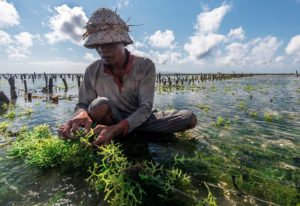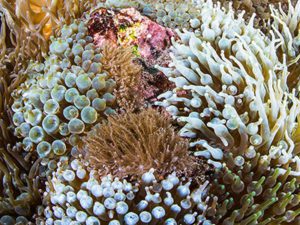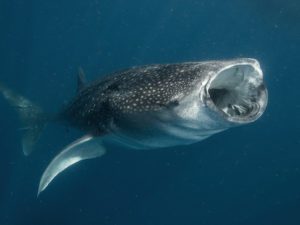In October, governments will gather to adopt the post-2020 global biodiversity framework at the 15th meeting of the Conference of the Parties (COP15), which will set biodiversity mandates for at least the next decade. To learn more about the status of the COP15 negotiations process, Our Shared Seas reached out to Jennifer “Jing” Tauli Corpuz of the Kankana-ey Igorot People of Mountain Province in the Philippines. A lawyer by profession, Ms. Corpuz is the Global Policy and Advocacy Lead for Nia Tero, an organization that supports Indigenous guardianship of vital ecosystems.
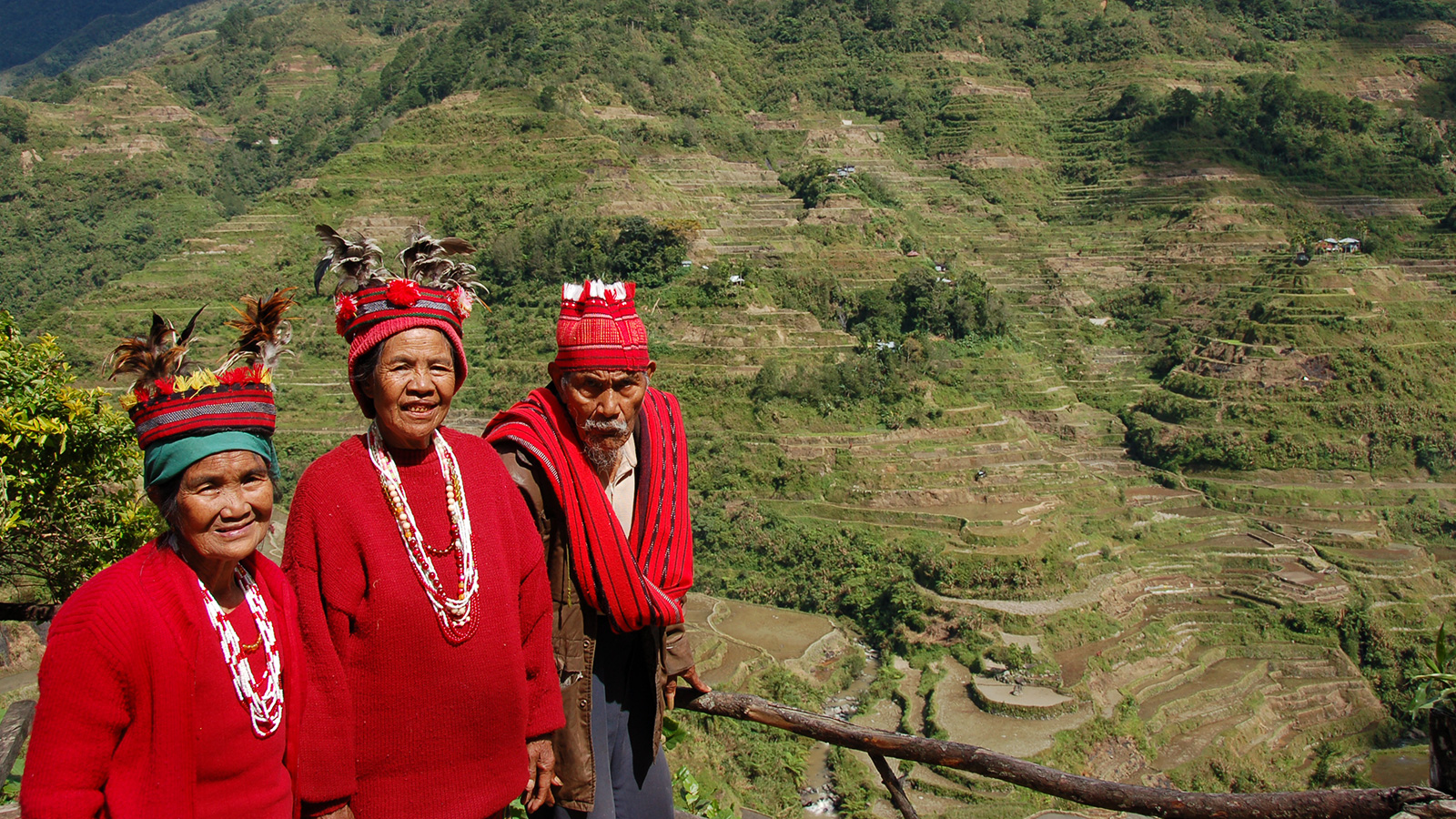
Igorot people, Philippines. Photo: Dylan Walters / creative commons
The biodiversity framework’s current draft text includes a target to protect 30 percent of the ocean and land by 2030. The conservation community is increasingly recognizing that a transformation is required, both in worldviews and formal governance processes, to recognize the role of Indigenous Peoples in conservation and sustainable use of biodiversity. Ensuring Indigenous Peoples are part of decision-making for processes such as the post-2020 biodiversity framework is not only an equitable approach, but also necessary to secure critical support. Research shows that against a backdrop of unprecedented biodiversity decline, the majority of the world’s remaining biodiversity exist on landscapes and seascapes owned by Indigenous Peoples.
We are approximately five months away from the Fifteenth meeting of the Conference of the Parties (COP15) to the Convention on Biological Diversity (CBD), set to take place in Kunming, China. What is the current state of CBD negotiations as it relates to ocean protection?
There was a pause in the negotiations process because of the COVID-19 pandemic, but now the momentum is building up again toward the adoption of the post-2020 global biodiversity framework at COP15. To regain momentum, the Secretariat organized a series of webinars and briefings on the framework and informal sessions of the CBD Subsidiary Bodies earlier this year (in February and March), all of which were virtual. The formal sessions of these subsidiary bodies will take place over the course of May and June 2021. These subsidiary bodies include the scientific advisory body—known as Subsidiary Body on Scientific, Technical and Technological Advice (SBSTTA)—and the Subsidiary Body on Implementation (SBI), which is tasked with monitoring and enhancing implementation
The current proposed targets in the global biodiversity framework, specifically targets 1 and 2, include the following language: “By 2030, [50%] of land and sea areas globally are under spatial planning addressing land/sea use change,” and, “By 2030, protect and conserve through well-connected and effective system of protected areas and other effective area-based conservation measures at least 30 percent of the planet.” This includes terrestrial, freshwater, and marine areas. Many CBD Parties have spoken up in support of the 30 percent target for marine areas and land protection.
What is the status of the CBD negotiations process in terms of recognizing the priorities and rights of Indigenous Peoples?
The priorities of the Indigenous Peoples in the process include recognition of their role and contributions to achieving the objectives of the Convention in all relevant targets. The relevant targets include:
- Proposed targets 1 and 2 on spatial planning and area-based conservation—specifically, stronger recognition of Indigenous-led conservation, inclusion of Indigenous-owned or governed lands and waters in targets 1 and 2, and stronger support for securing land tenure and governance of Indigenous lands, waters, and resources.
- Recognition of Indigenous customary sustainable use of resources in proposed targets 3, 4, and 8—particularly the recognition of and support for traditional livelihoods and the customary use and trade of wild species.
- The inclusion of safeguards in the design and implementation of “nature-based solutions” in proposed target 7.
- The provision of direct, adequate, and accessible financial and technical support for land and resource management of Indigenous Peoples and Local Communities (IPLCs) in proposed target 18.
- Stronger protection for traditional knowledge, beyond the current wording of proposed target 20.
Admittedly, the International Indigenous Forum on Biodiversity (IIFB) has not given enough attention to ocean protection compared to terrestrial protection. The IIFB is working to address this by strengthening its working group on Indigenous marine issues and by consciously including “waters” whenever Indigenous lands are mentioned.
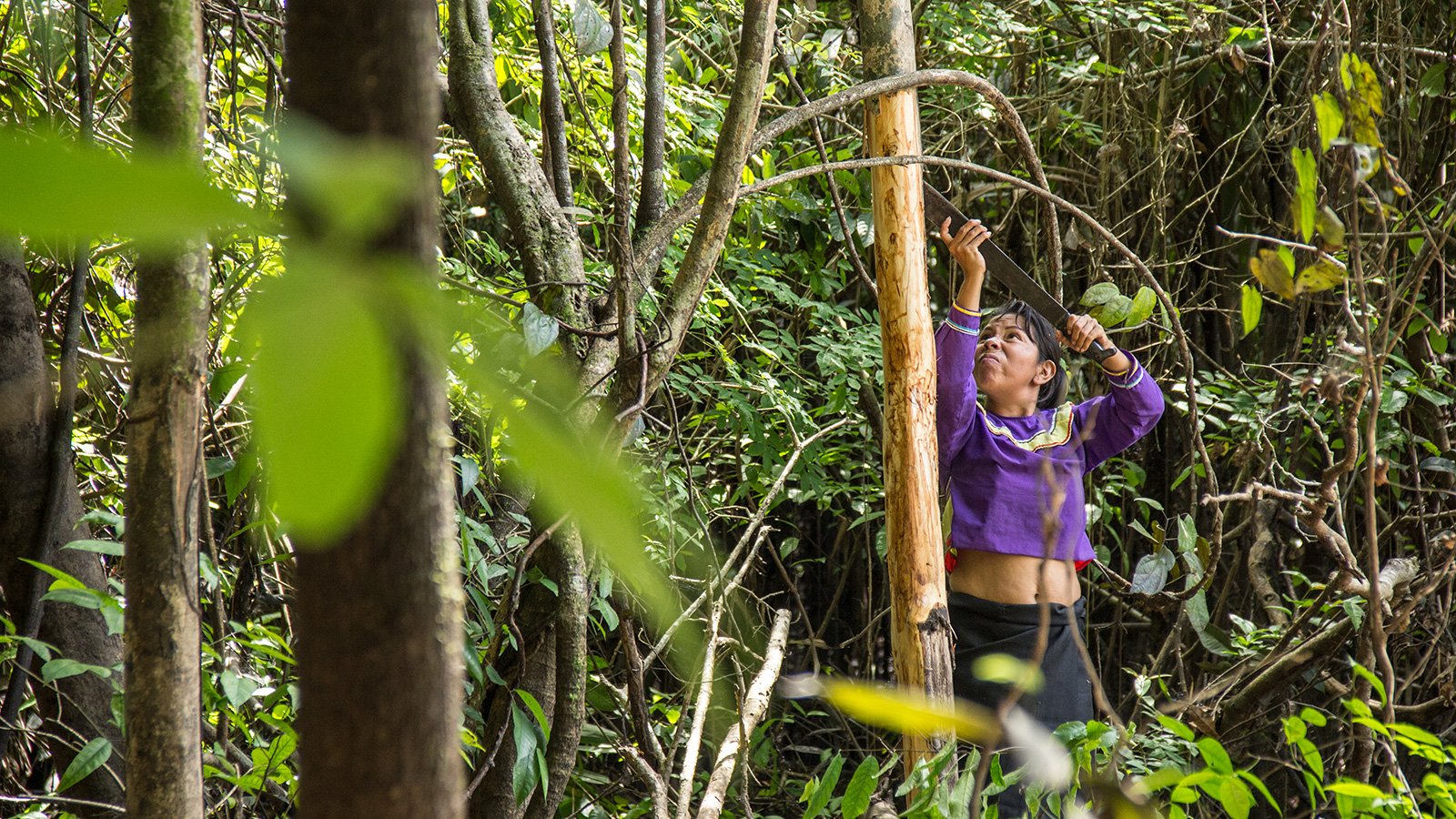
Peruvian Amazon. Photo by Juan Carlos Huayllapuma/CIFOR
Between now and the opening of COP15, what are key barriers and opportunities for stakeholders to integrate the priorities of Indigenous Peoples into the post-2020 framework? Where are you noticing challenges and where are signs of progress?
In the absence of face-to-face meetings, it is very challenging for Indigenous Peoples to reach out and explain their positions and proposals to CBD Parties. Key barriers include the inability of many Indigenous Peoples to participate in online meetings due to internet connectivity issues, the lack of language interpretation, and time zone challenges. Although there is growing awareness among CBD Parties and observers on the importance of involving Indigenous Peoples as full partners in the implementation of the post-2020 global biodiversity framework, it is not yet certain how far the Parties will go in supporting specific text proposals from Indigenous Peoples in the actual negotiations. Several reports—including the IPBES Global Assessment Report on Biodiversity and Ecosystem Services, the fifth edition of the Global Biodiversity Outlook (GBO 5), the second edition of Local Biodiversity Outlook (LBO 2), and a number of recent scientific and technical studies—have supported a more prominent and central role for Indigenous Peoples in biodiversity conservation. In fact, the most recent IPBES report found that biodiversity is declining at a lower rate in Indigenous lands and waters.
An opportunity is the willingness of countries to support a more central role of Indigenous Peoples based on their domestic experience and practice, such as on Indigenous protected and conserved areas (IPCAs) in Canada and Indigenous protected areas (IPAs) in Australia. The High Ambition Coalition—a group of more than 50 CBD Parties who are supporting the proposal for protection of 30 percent land and sea by 2030—is also interested in engaging with and supporting proposals from Indigenous Peoples.
During the contact group on SBSTTA 24 Agenda Item, 3, several Parties proposed language supportive of proposals from Indigenous Peoples on various targets and several Parties supported proposals presented by Indigenous Peoples during the contact group meetings. It will be important to follow up on these opportunities in the lead-up to COP 15.
The production and dissemination of online communications tools to popularize the key messages from the second edition of the Local Biodiversity Outlook (LBO 2) is also a challenge. With adequate support, the development of these communications materials would represent an important opportunity to socialize key findings from the report.
[A number of studies] have supported a more prominent and central role for Indigenous Peoples in biodiversity conservation. In fact, the most recent IPBES report found that biodiversity is declining at a lower rate on Indigenous lands and waters.
How has the COVID-19 pandemic impacted participation at virtual meetings during the lead-up to COP15, and what measures should be taken to ensure that all interested and eligible Indigenous Peoples have an opportunity to participate at the meeting in Kunming?
On the challenges posed by virtual meetings, here is an excerpt from the statement of the International Indigenous Forum on Biodiversity (IIFB) at SBSTTA 24:
“While we appreciate all efforts to maintain momentum on the post-2020 global biodiversity framework, we would like to raise grave concerns about the process. Virtual negotiations will be very difficult for IPLCs including Women and Youth because of connectivity issues, time zone challenges, and the requirement for Party support for IPLC proposals to be reflected in the text. Our participation must not fall below the standards and mechanisms in international agreements and COP decisions. Given the changed circumstances and the limited time allotted for IPLC statements, the Indigenous Forum in Biodiversity needs assurance from Parties, the Co-Chairs, the SBSTTA Chair, the Bureau and others that our proposals as IPLCs will be included for consideration in contact group working documents or CRPs, as appropriate.”
On several instances, the time allotted for certain agenda items runs out and the IIFB is unable to fully present its prepared statement or intervention. This creates enormous difficulty, especially when Parties must hear the IIFB proposals in full before they can indicate whether or not they support the proposal. It was particularly egregious that the IIFB was not able to intervene on proposed targets 19 and 20, which focused on the inclusion of traditional knowledge in biodiversity decision-making and on participation and rights of Indigenous Peoples.
Many Indigenous representatives are concerned that they may not be able to participate in upcoming in-person negotiations, given the slow pace of vaccinations in their respective countries. A rumor that only a limited number of Party delegates and no observers will be allowed for the in-person negotiations is also causing concern.
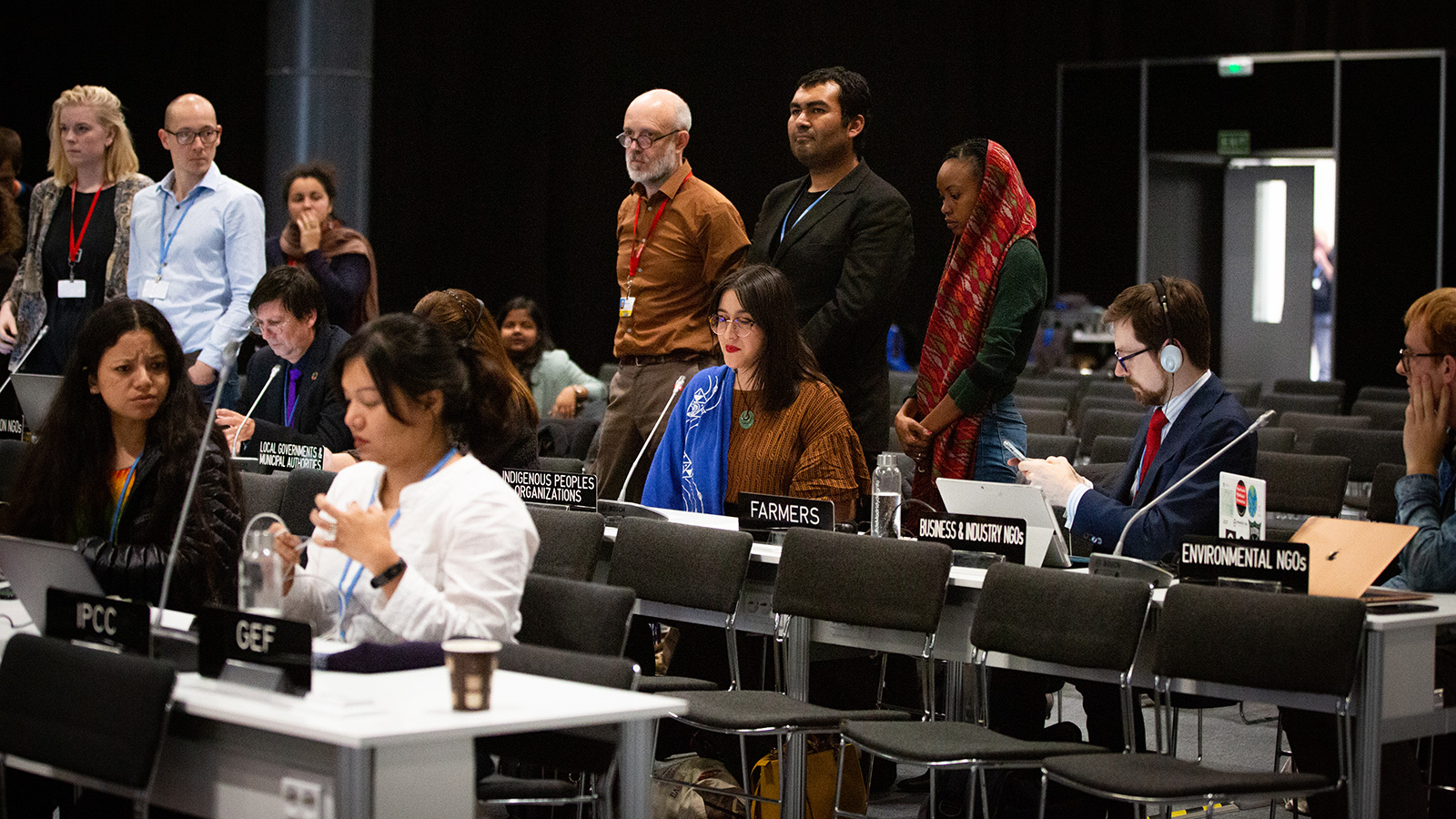
COP25 Closing Plenary. Photo: UNclimatechange / creative commons
Developing the post-2020 framework is only one piece of the puzzle. Do you have recommendations on what a successful implementation of the framework might look like to ensure an equitable approach in practice? How can the conservation community support this implementation, both in the short-term and long-term?
Successful implementation of the framework will require inclusion of Indigenous Peoples as full partners in the post-2020 global biodiversity framework. There must be respect for the right to self-determination and the land and resource rights of Indigenous Peoples. Parties to the Convention of Biological Diversity should approve a framework that enables Indigenous Peoples to maintain their spiritual and reciprocal relationship with their lands and waters, as this is proven to deliver better biodiversity outcomes than formal protected areas.
Within the post-2020 global biodiversity framework and other formal processes (such as national laws), this support could come in the form of:
- Formal recognition of Indigenous land and ocean tenure and Indigenous governance over these areas.
- Support for Indigenous guardian programs and cultural recovery and transmission efforts by Indigenous Peoples.
- Retention of the four previously adopted indicators related to traditional knowledge and Indigenous Peoples—land tenure, traditional occupations, Indigenous languages, and participation.
- Adoption of the land tenure indicator as a headline indicator, which will be mandatory for NBSAPs and National Reports.
- Support for an Indigenous-specific process to develop and operationalize relevant indicators for Indigenous Peoples.
- Adoption of clear and strong safeguards that would protect Indigenous lands and waters from “nature-based solutions” projects that have potential adverse effects Indigenous Peoples’ rights.
- Ensuring full and effective participation of Indigenous Peoples in the development and implementation of NBSAPs and in biodiversity decision-making and the inclusion of Indigenous territorial management plans in spatial planning instruments.
- An accessible and effective accountability mechanism able to address violations of Indigenous land and resources rights and criminalization of environmental rights defenders.
- Provision of direct, adequate, and accessible financial and technical support for land and resource management of Indigenous Peoples and local communities. This could include the establishment of a dedicated fund.
More broadly, the conservation community can support Indigenous-led conservation. “Fortress conservation,” which has been responsible for widespread dispossession, displacement, and criminalization of Indigenous Peoples, must become a thing of the past. In assisting Indigenous communities with conservation projects, the conservation community must ensure full transparency in financial accounting and that the Indigenous community receives a fair and equitable share of benefits generated by the projects. Finally, the conservation community must commit to a rights-based approach to conservation and adopt grievance and redress mechanisms to address instances of rights violations related to conservation projects.
More broadly, the conservation community can support Indigenous-led conservation. “Fortress conservation,” which has been responsible for widespread dispossession, displacement, and criminalization of Indigenous Peoples, must become a thing of the past.
Individuals interested in learning about inclusion of Indigenous Peoples in the COP15 process are encouraged to follow the work of Nia Tero for updates. In addition, check out the new report from the ICCA Consortium to learn more about local-to-global conservation efforts, review the latest global analysis of how much of the planet is likely conserved by Indigenous Peoples and local communities, and explore recommendations for the post-2020 global biodiversity framework.

